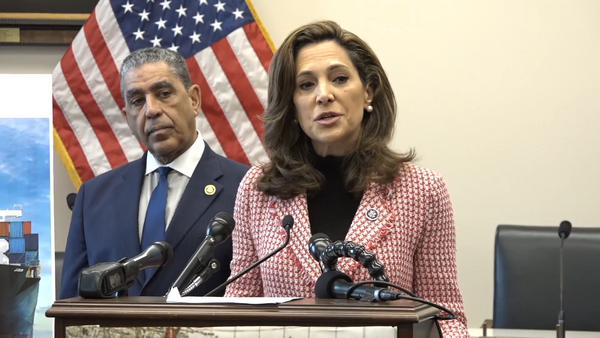
At the beginning of December, I blogged about buying a Lumia to see if I could make it my main phone. We're a month down the line - are we all expecting that it went well?
Umm … it did not. Does anyone want to buy a hardly-used Lumia?
Design
Physically, the Lumia is a gorgeous machine. The feel of it, the layout of the buttons and - oh - that screen is completely wonderful. The little flap you have to negotiate to get to the USB port is a pain, but apart from that it's wonderful. It's a hundred times better than the iPhone 4-class chassis (a design I would actually go so far as to say I "hate"). Personally, I can't see the point of buying any Windows Phone unit that was not a Lumia.
Good news: done
The phone I owned before this was an iPhone 3GS, which was coming up to its two-year anniversary when I bought the Lumia. With the iPhone, it was common (almost routine) to pick it up and play with it every time I noticed it. For instance, I might be passing from one room to the other, pick it up, unlock it, have a look at Twitter, put it down and resume. What I've discovered in the past week is that I'll look at the Lumia, consciously avoid it and continue with my routine. Likewise, one day I noticed that I wanted to check Twitter, my daughter was using my iPad and I thought "I'll just wait" rather than finding and using the Lumia.
Something with that picture is very wrong.
What's wrong is the niggles. Windows Phone is a good operating system. But it's not a great operating system. (Yes, I know there are former Windows Phone general managers who say it's "superior", and I think they're wrong.) It's the niggles that's stopped me from developing a deeper relationship with the device that turns it into a ubiquitous tool, as opposed to "just a phone".
Pearls of wisdom
The last phone that I loved was my BlackBerry Pearl. I was pretty convinced I was going to have to be buried with that thing, such was the tenacity with which I fantasied that I would clutch it in my cold, dead hands. The phone I loved before that was a BlackBerry 7210. The one before that - I can't entirely remember, but it was a BlackBerry with a monochrome screen. I've never loved my iPhone in the same way as any of those BlackBerry units, but the reason why RIM got so much out of my cold, dead heart was that in the golden time of RIM, the devices engendered trust.
Every BlackBerry that I owned was an incredible phone because it did the job I needed to do amazingly well. At the time I was on the road and had to handle about 150 emails a day. I had 1,200 contacts in my address book and a diary to match. It was plumbed directly into my Exchange box. It was completely perfect - pick it up, boom, everything there, everything was fast, the battery lasted for about 400 years and the data tariff was cheap as chips. Importantly though, the thing never turned itself into a chunk of beautifully shaped, though fundamentally useless, polycarbonate.
There has been some press with the Lumia about battery problems. Mine, apparently, does not have a "battery problem". However, when you run it down to empty you cannot charge it again with plugging it into the mains. (A car charger won't resume it, and USB definitely won't.) Sometimes even if it is plugged into the mains you have to muck about with it for close to 30 minutes trying the Nokia equivalent of Ctrl+Alt+Del on the thing. On full charge I can get 16 hours out of the thing, so I'm constantly stressed about it running out of battery. What if I'm out in the car, break down and have no battery? I'd better hope I've remembered my mains inverter and mains charger to get it booted again. Crazy.
But it's more than just the battery …
A lot of the actual software niggles were covered by Charles Arthur in his review of the HTC Titan. It was this review that prompted me to buy a Lumia to see for myself whether he was correct. (Spoiler: he was, generally.)
It was quite interesting for me to learn during this exercise more about what I really used my phone for. The answers were, apparently, playing music in the car, Twitter, web browsing, email, calendar and - unless avoidable - making phone calls. I discovered this list through self-reflection - they are the things I no longer wanted to do on a phone because of the Lumia.
The music app, based on Zune, is hilarious. To understand why, first compare it with the iPod UI, which is about as basic as you can make it: artists contain albums which contain songs. Build a list of songs and it will play them in turn or randomly. There is no flair or sophistication contained within.
OK. In one of my favourite Father Ted episodes - Think Fast, Father Ted, the DJ only brings one record (Ghost Town by The Specials). That's what the Zune app is like. If you own one 7in single, you are absolutely fine.
Zune, rather than just blithely ripping off Apple's design, makes life as hard as possible. Want to play all albums by a given artist? Firstly, wait several days while your unconscious works out how to do it. Google on and off during that period and find nothing that works. Then eventually, half by accident, click on the little arrow icon next to the artist (as opposed to by the name of the artist. Clicking the name of the artist, incidentally, shows you all the albums by that artist.)
Similarly, you want to play everything in the collection at random? Simple - just swipe three times and click twice and you're golden! (That one Google did help me with. Note: If you're having to RTFM to use a music player, the music player design team is doing it wrong.)
It's actually the quality of the sound output that really lets the Lumia down. For one thing, you only have one volume setting so if you crank the volume up to full (as I have to in my car - or, OK, want to), the ringer ends up at full as well. So every time I unplug it from the car, I have to wind the volume back. That's ignoring the fact that the volume is insultingly quiet. I bought a headphone amplifier, which made a difference, but the resulting sound has little punch or verve, which I think is due to the Lumia, not the app. Something in that bundle of hardware and software is stripping the life out of the music and giving it a sort of pasty, Val Doonican-like quality. The Lumia does not, repeat not, turn your car into a banging urban clubland.
(OK, but let's look at trust. Do I want my kids woken up at 3am because I've forgotten to wind the ringer down from "wake the dead" to "wake normal human male"? No - so I worry. I start drifting off to sleep and wake up in a panic about whether I've turned the ringer volume down.)
The more sinister problem is that I end up thinking that I'll live with the Lumia and blow £2k on a new car audio setup - which it's worth noting was fine when I was rocking an iPhone. This pattern I found repeating: on the iPhone I used the built-in clock app to time baking cakes with the kids. With Windows Phone it would "tombstone" (ie, suspend) the third-party kitchen timer app so our Christmas cake was almost ruined. The result - buy an actual kitchen timer rather than use an app. That isn't the point of this stuff.
Tweeting
Now, those who know me will tell you that I like Twitter.
In Charles's review of the HTC Titan he mentioned that the built-in Twitter app does not show you pictures of the people you're tweeting with, but only shows their name. That's the rule of designing for Metro - it's all typographical. That would be fine if it wasn't for the case that I only recognise people by their profile pictures. A secondary recognition comes from their Twitter usernames. I would be surprised if I would recognise the actual names of all but a few people that I deal with on a daily basis. But no. you go ahead Microsoft and cram your worldview on how people use Twitter into the OS.
So the built-in app was out - it's unusable. The next option, the official Twitter version, I used for a bit, but that doesn't show you properly when you have new mentions - ie, you're actually having a conversation - so that was out. (Incidentally, the UX on that app was borked because of Metro too.) I noticed that Tom Warren - rockstar Microsoft blogger and fan of Windows Phone - was using Birdsong. I've been using this for a month and it's roughly usable but is nothing like as good as how I remember the official iPhone app was (before they changed it, which I for the record haven't tried). It seems to really struggle to work properly over GPRS.
Let's look at this from a trust perspective again. I am one of those people who, for whatever reason, really likes Twitter. The Lumia doesn't connect me with my Twitter peeps; it's just a stubby, more frustrating client that's only of any use on Wi-Fi.
Web browsing
I'm not entirely sure how I feel about this one. Clicking an IE logo seems deeply counterintuitive. For people like me, the IE brand is not helping. It's also welded into Bing, which might be fine but remember this is about trust. I trust Google, I don't trust Bing. So I deleted the IE tile from the home screen and put a shortcut to Google there instead.
But Tell Me, Windows Phone's voice recognition app is hard-wired into Bing. Do a search in that mode and it won't use Google. As a result, I don't trust the answers and would revert back to keying in the query on Google.
However, web browsing, and the groupware bits of email, calendar and contacts, were about the strongest of the things I would use a phone for.
It's a trust thing
In my time working as as software consultant, I've been to many clients where cells of users act in resistance to new software rollout. (Yes, some software resisted against has been mine.) We know this happens because the software doesn't build trust with the users. Click this button when filling out a quote and the quote is lost, or print a report and the paper size is set wrong so the paper won't emerge without manual intervention. Or how about management insisting on a way of working that doesn't fit with reality on the factory floor? There are thousands of examples of software projects that failed because they did not win the user's trust.
And so this is the place where I've ended up with Lumia and Windows Phone. I don't trust it to wake me up in the morning because the battery life is so lousy. I don't trust it to time the baking of a cake. I don't trust the traffic data because it's "x" minutes delayed and I'm sitting in a traffic jam that it claims isn't there because it wasn't there 15 minutes ago when I could have turned off this damn road. I don't trust it not to frustrate me using Twitter when I'm on GPRS. I don't trust it to connect to my Mac without four reboots of both phone and Mac. I could go on - interestingly I really want to go on, but I shan't.
So I miss my iPhone, and that tells me most of what I need to know about this experiment. And I miss it because the iPhone isn't a phone - it's a small-scale personal computer. It connects me with the things in my life that are important to me; it provides information. The battery life could be better - please guys, just make it thicker or something - but fundamentally it's reliable, and from the reliability comes trust.
I really wanted Windows Phone to work for me. This was £400 of my own money spent to try it. But it just doesn't work well enough to be the small-scale personal computer that I must have on me all the time.
Matthew Baxter-Reynolds is an independent software development consultant, trainer and author based in the UK. His favourite way to communicate with like-minded technical people is Twitter: @mbrit.







